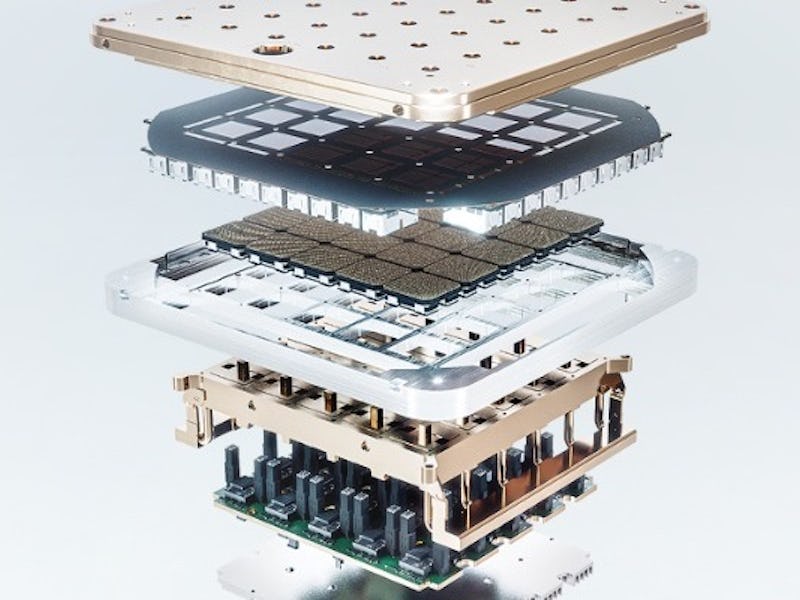Tesla: Impressive A.I. Day photo shows a key element of full self-driving
Tesla unveiled its artificial intelligence training tile at a special company event.

Tesla’s full self-driving system is taking shape — and it’s using an intricate tile to bring it to life.
Earlier this month, the company hosted an Artificial Intelligence Day where it detailed its in-house capabilities. Tesla’s upgraded computer systems are building out the company’s planned autonomous driving feature, which will enable vehicles built after October 2016 to drive from A to B without any human intervention.
During the event, Tesla unveiled the “training tile” designed to bring the feature to life.
Want to find out more about the latest in the world of Tesla? Subscribe to MUSK READS+ for exclusive interviews and analysis about all things Musk.
Tesla's training tile, as outlined at the A.I. Day.
Tesla A.I. Day: what is the training tile?
At first glance, the time seems like a shiny collection of intricate black, gold, and silver components. It wouldn’t look amiss in Alex Garland’s quantum computing series Devs.
But to understand what the training tile is, it’s necessary to take a step back.
In October 2016, CEO Elon Musk announced that every Tesla would ship with the necessary suite of cameras and sensors to one day enable full self-driving. All it would need, he explained, was a software and computer upgrade.
Tesla’s software, currently in beta, runs on the in-car computer. It takes input from the car’s eight cameras, creates a 3D “vector space” of the surrounding world, and uses that to make judgments about what to do next.
Tesla trains its software at its own facilities by feeding it videos taken from those eight cameras. Objects in the video are labeled to help the software understand what they look like, how they move, and how to react around them.
During the event, Tesla unveiled the D1 chip. This chip is designed for training Tesla’s software:
- It packs 50 billion transistors into 645 square millimeters
- Each chip offers 362 teraflops of BF16 performance
- In other words, it can complete 362 trillion floating-point calculations per second in the BFloat16 format focused on machine learning
That’s a lot of number crunching.
The D1 chip can join with other D1 chips to work together. Tesla built a training tile that consists of 25 D1 chips.
A detailed breakdown later on in the event explained how each component fits together:
Tesla's detailed breakdown of the training tile.
Here is what is inside each tile:
- The 25 D1 chips
- High-bandwidth input and output that reaches up to nine terabytes per second.
- A custom voltage regulator to provide power to the chips.
- A 52-volt DC input.
- Thermal and mechanical pieces.
The end result is a tile with nine petaflops (nine quadrillion floating-point operations per second) of power in less than one cubic foot.
The team placed 12 tiles on two cabinet trays to make a cabinet with over 100 petaflops of power. They paired 10 cabinets together to create an Exapod, providing 1.1 exaflops of computing power over 120 training tiles.
All this builds up to Dojo. Tesla claims that when it’s ready next year, it will be the fastest training A.I. computer. Compared to other computers at the same, cost, it will offer four times the performance, 1.3 times better performance per watt, and a five times smaller footprint.
Tesla is actively recruiting people to help complete this project and to ultimately complete its full self-driving feature. The training tile represents the building block for how it reaches these ambitious goals.
SUBSCRIBE TO MUSK READS+, A PREMIUM NEWSLETTER THAT COVERS THE WORLDS OF ELON MUSK, SPACEX, TESLA, AND EVERYTHING BETWEEN.